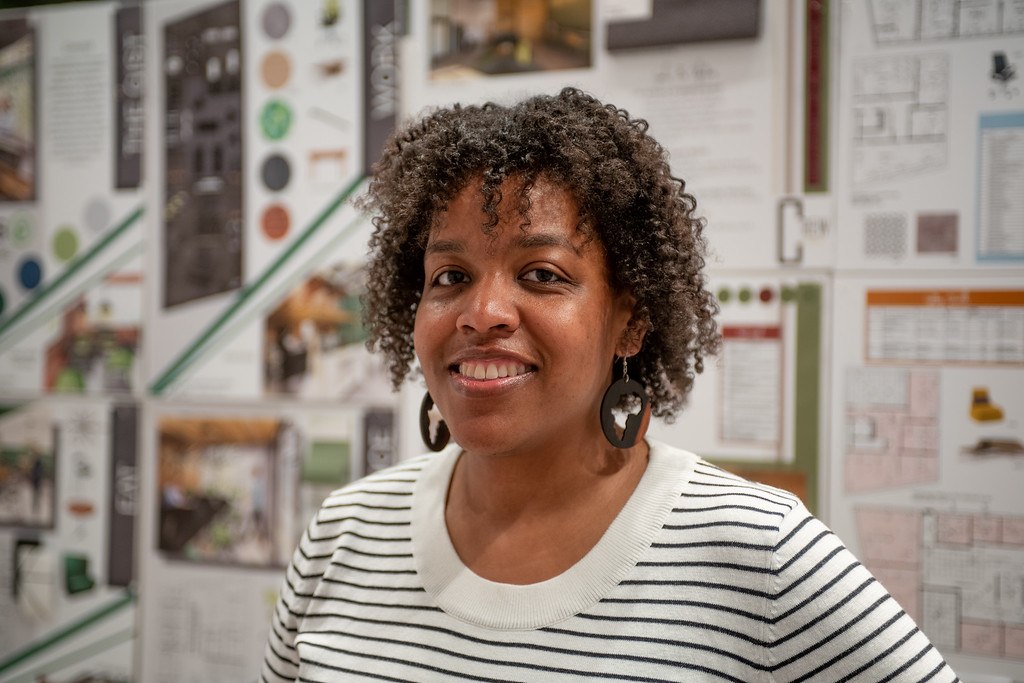
Azizi Arrington-Slocum
By University Marketing
May 14, 2019
Azizi Arrington-Slocum can hardly remember a time she didn’t want to be an architect.
“I was that kid who would always be playing with Legos or drawing something. My uncle worked at NASA as an architect and he served as my mentor and inspiration, giving me books and so much of my library now is from him,” said Arrington-Slocum, associate professor and coordinator of State’s interior architecture design program. “He never passed his licensing exams, though, so when I passed mine I sent him a copy of my license and he still has it hanging up.”
Prior to State, Arrington-Slocum earned her bachelor’s and master’s degrees in Florida. She was one of fewer than 300 African American women in the nation to hold an architectural licensure when she obtained hers six years ago in the Sunshine State. In 2014, she also became a registered interior designer after passing the NCIDQ.

She served as a project manager at Johnson Peterson Architects in Tallahassee, Fla. and served as an adjunct professor at Florida A&M University and Tallahassee Community College for five years.
“Now I do design work on the side, but I would like long-term to start more of a practice,” she said. “When I used to practice, I enjoyed the technical part, building codes, construction documents and thinking practically about how it all comes together. A lot of that is part of the job that a lot people don’t enjoy. I’m the person people know to come to when it comes to that part of the design work.”
She still gets excited to see past projects that were once an idea in her head come to life as structures that people can enjoy and use.
“For me now, the best part is going to see things I designed and see that it isn’t in my head anymore,” she said. “It’s a great feeling and I’m excited to see that students choose this as a major and get to experience that same joy.”
An Ohio native, Arrington-Slocum joined Indiana State’s department of built environment in 2011. She serves as program coordinator and teaches all the interior architecture design program’s computer classes, construction and detailing, one studio for second year students and two studios for fourth year students.
“I don’t teach first-year students anymore, but because I’m program coordinator first-years tend to be intimidated by me,” Arrington-Slocum said. “When they get to my classes their second year in the program, I share stuff about me so they see that I’m human. Nothing to be scared of.”
Once over the hurdle, Arrington-Slocum stresses to students her belief that they, as designers, can have control over people’s experiences through 10 to 16 weeks of designing a project.
“With about 100 students, we’re a small program but a growing one. When I started, there were about 40 students and I appreciate that we have stayed a small enough program to allow me, from a student’s second year on, to get to know them on a more personal basis,” she said. “Our department provides a studio culture, in that students get to know their professors and can come to them with questions about classes and help with things like getting a job because we make them feel like we are more than professors.”

